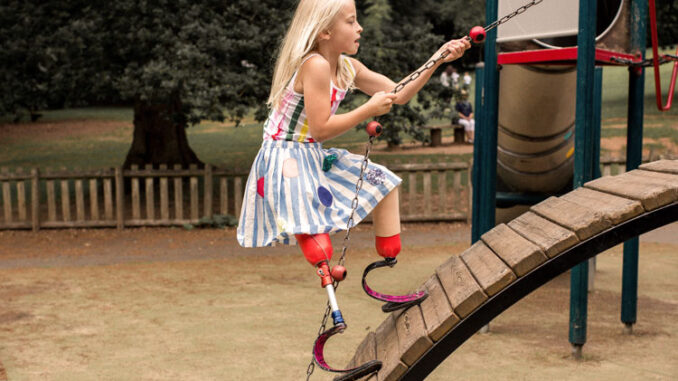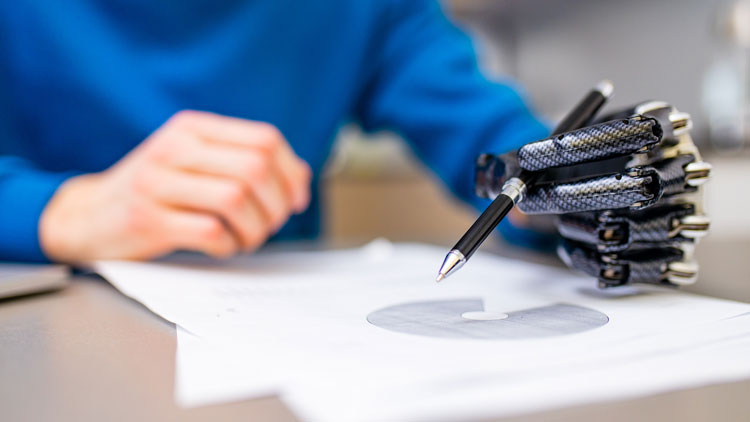
You might have seen people with wooden legs and metal hook-shaped hands in movies. These are early examples of prosthetics. A prosthesis replaces a body part. They are used by people who have lost a limb [arm or leg]. Early prosthetics were heavy. Their function was limited. Today prosthetics look and work more like the real thing. Recent advances also make them easier to use and more affordable. Older prosthetics were heavy because they were made of wood and heavy metals. Modern prosthetics are lighter because they are made of plastics and lightweight metals.

Engineers made a new artificial hand that can help more people.
Today, the power for prosthetic limbs can come from different sources. Some are powered by cables that are connected to other parts of the body. Others are powered by motors.
Prosthetics can also be controlled in different ways. Some are controlled by other parts of the body. Advanced prosthetics are controlled by a person’s brain. The person thinks about moving the limb and the prosthesis moves.
Current technologies are expensive and can be hard to use. This means that there are many people who cannot use them. But a new prosthetic hand is powered and controlled by the user’s breathing. It is easy to use and affordable. This makes it available to more people.
What Do You Think? How could an artificial hand improve someone’s life?
Photo Credit: (t)Josie Gealer/Getty Images, (b)yurakrasil/Shutterstock



